Paver patterns: 8 creative looks for patios or paths
Experimenting with paver patterns can instantly turn your garden flooring into a design feature – here are our top looks to try
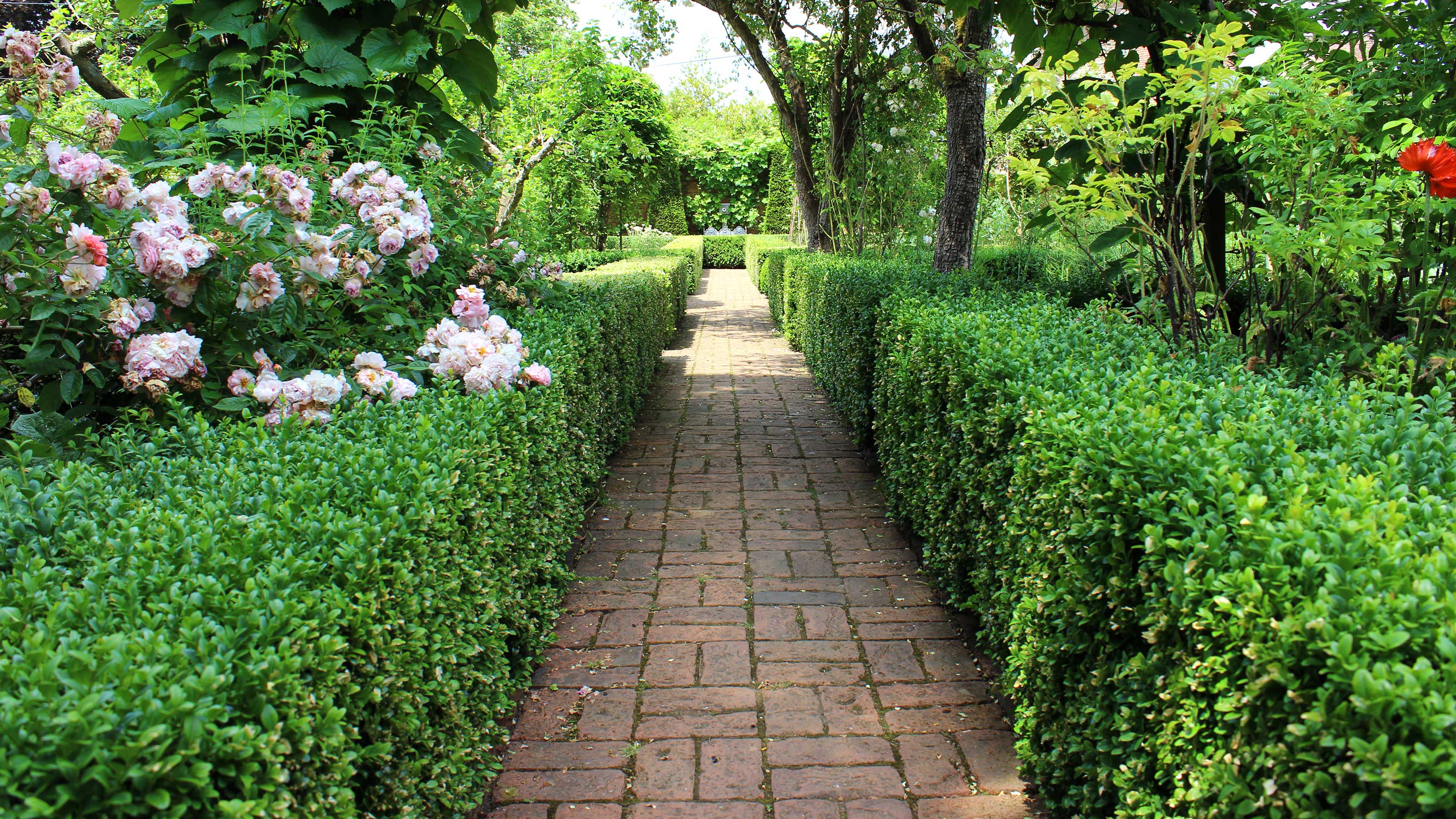

It may not be the first thing that comes to mind when planning a new patio, but paver patterns are an important consideration. Whatever style of slabs you're going for, how you arrange them together can add an extra element of interest. And there are plenty of looks that can be achieved, from trendy to traditional.
With their stylish appearance, block paved patterns have become more popular for patio paving ideas in recent years as opposed to tarmac and poured concrete, explains the team at Infinite Paving. 'When it comes to paving patterns and ideas, different layouts create very different visual effects in your garden, whether it's square slabs arranged in a stretcher bond or rectangular slabs arranged in a herringbone pattern.'
To help get you inspired for your own space, we've brought together our top paving design patterns. Whatever your garden's style, you can be sure that one of these looks will suit it perfectly.
8 paver patterns to pep up your plot
Factor patterns into your paving ideas and you'll instantly elevate your patio or pathway.
1. Stretcher Bond
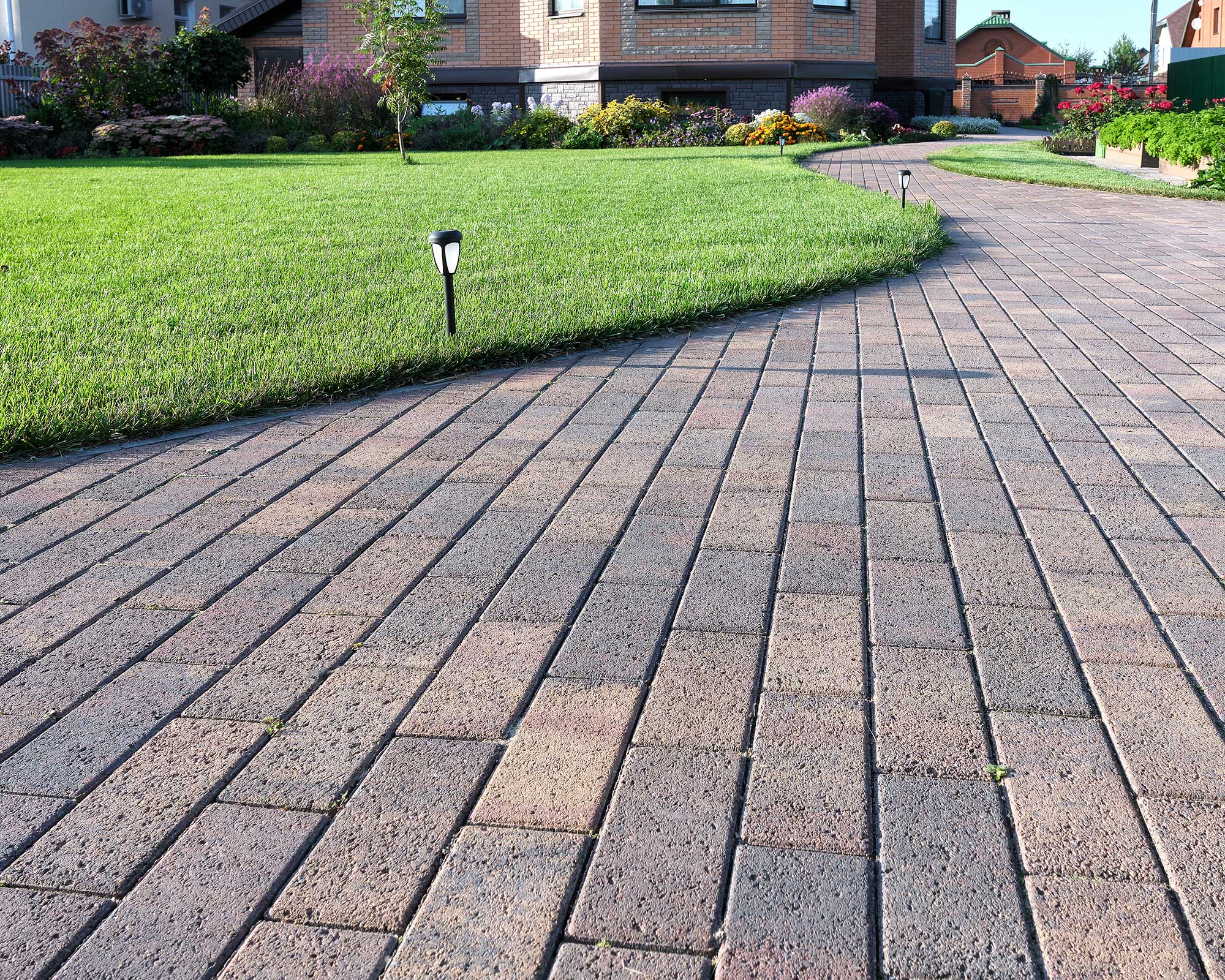
A simplistic style that's similar to brickwork on a house
'Stretcher bond, also known as running bond or half bond, is a classic paving design that is perhaps the most widely used,' says the Infinite Paving team.
The aesthetic of a stretcher bond paving pattern is clean and uniform, and it's easy to achieve. It mostly resembles the brickwork of a house, they explain.
Although simple, it still looks stylish. But the main reason why it's so popular is that it takes less time for a contractor to lay in comparison to a more complex design. So, if you're looking to cut prices on how much your patio costs, this tends to be an affordable option.
'Finally, another great reason to choose a stretcher bond paving pattern is down to the fact that it is very eco-friendly,' adds the team. This is because it requires minimum cutting and leaves close to zero waste behind.
2. Basketweave
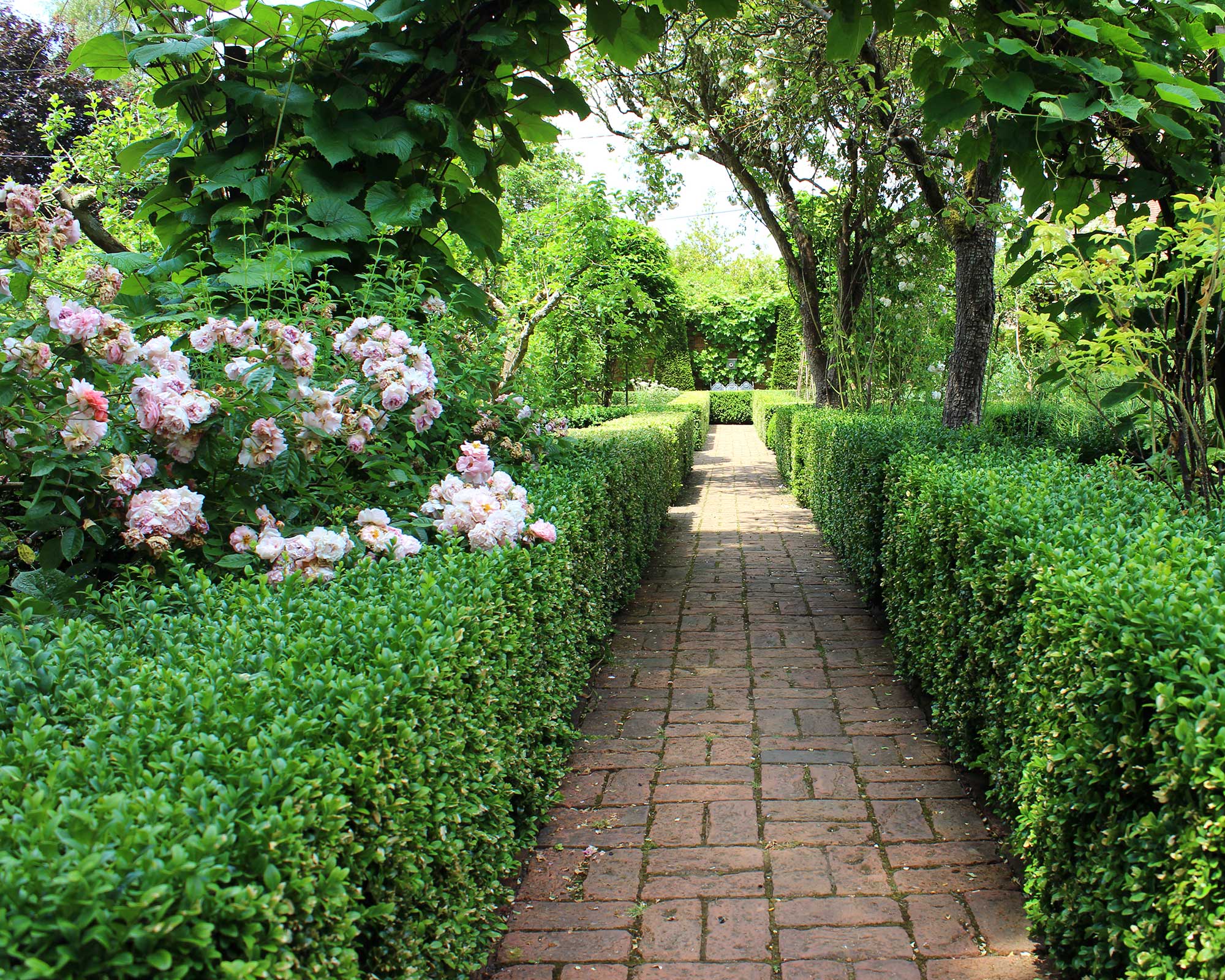
This type of paver pattern works well for a cottage garden path or patio
Basketweave is another popular paver pattern and oozes traditional charm. The Infinite Paving team explains that it resembles the appearance of a basket weave, which is where it gets its name from. 'The style features interlacing blocks that produce a visual style that appears like the slabs are weaving under and over each other – similar to the way a crafter would weave a basket.'
You can use different sized tiles and angles to vary the design, they add. The style is particularly effective when dealing with a long stretch of straight path or a driveway, so the weave can be admired fully when standing at either end.
'For those willing to get creative, it is also possible to mix different colors into the design to create some eye-catching effects on the weave,' they add.
If using this paving pattern as part of your driveway design, however, be aware that blocks can become displaced by car wheels over time.
3. Herringbone
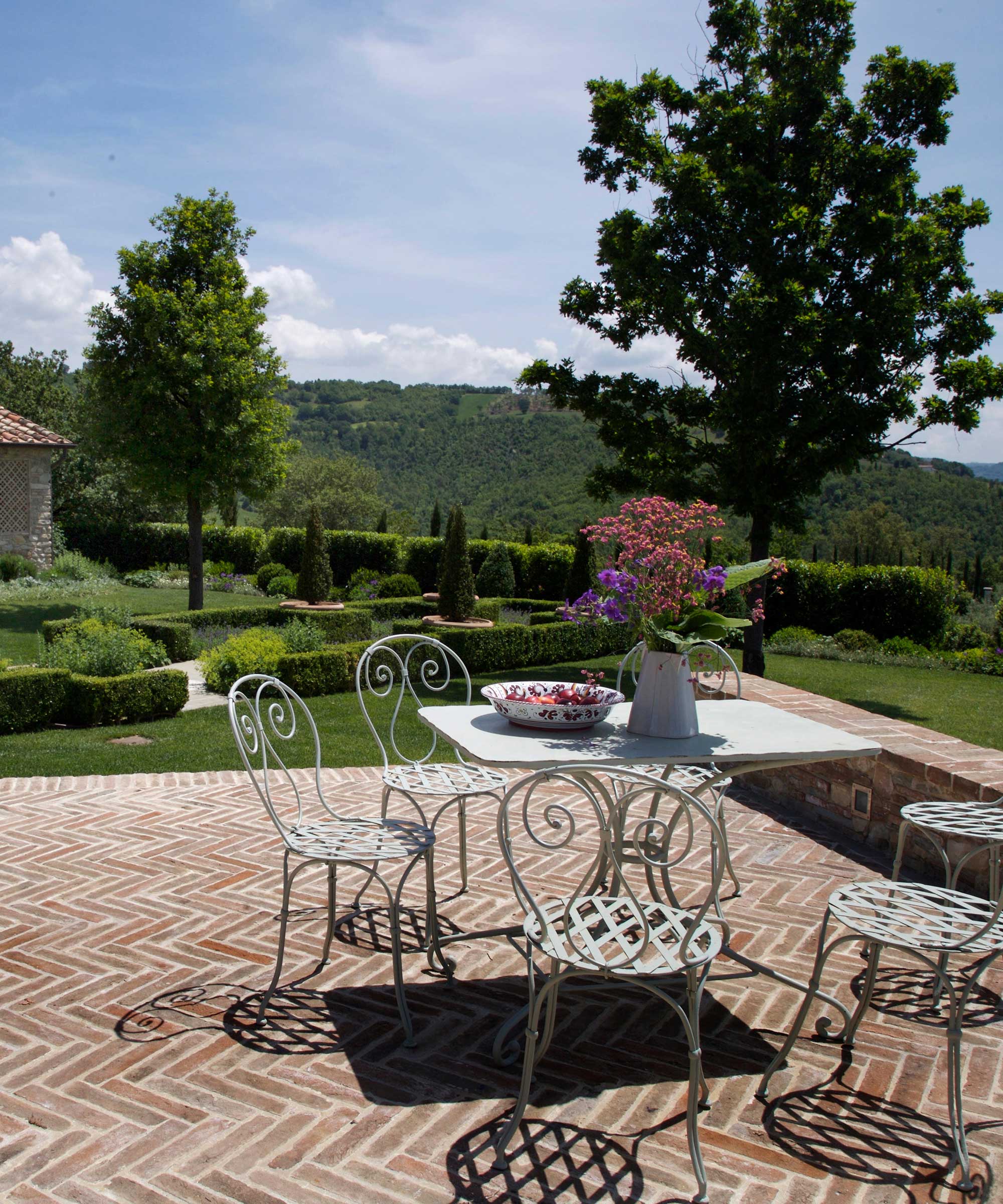
A sophisticated pattern perfect for a more unique look
The herringbone pattern is named after its likeness to the bones of a fish, explains Infinite Paving. It can be laid in two different block paving patterns: at 90-degree or 45-degree angles.
Although it looks complex, 90-degree herringbone paving is easy to lay, as it is installed through the use of a straight-edged timber rail, the team explains. In comparison, 45-degree herringbone is a much more difficult technique to achieve, requiring a lot more precision and expertise from the person placing the blocks.
Both of these patterns are very popular for driveway ideas, continues the team – 'the interlocking design means it can handle a substantial weight and won't become displaced when vehicles brake or turn on them.' And, it looks wonderful, so will ensure your home makes a great first impression.
4. Random course
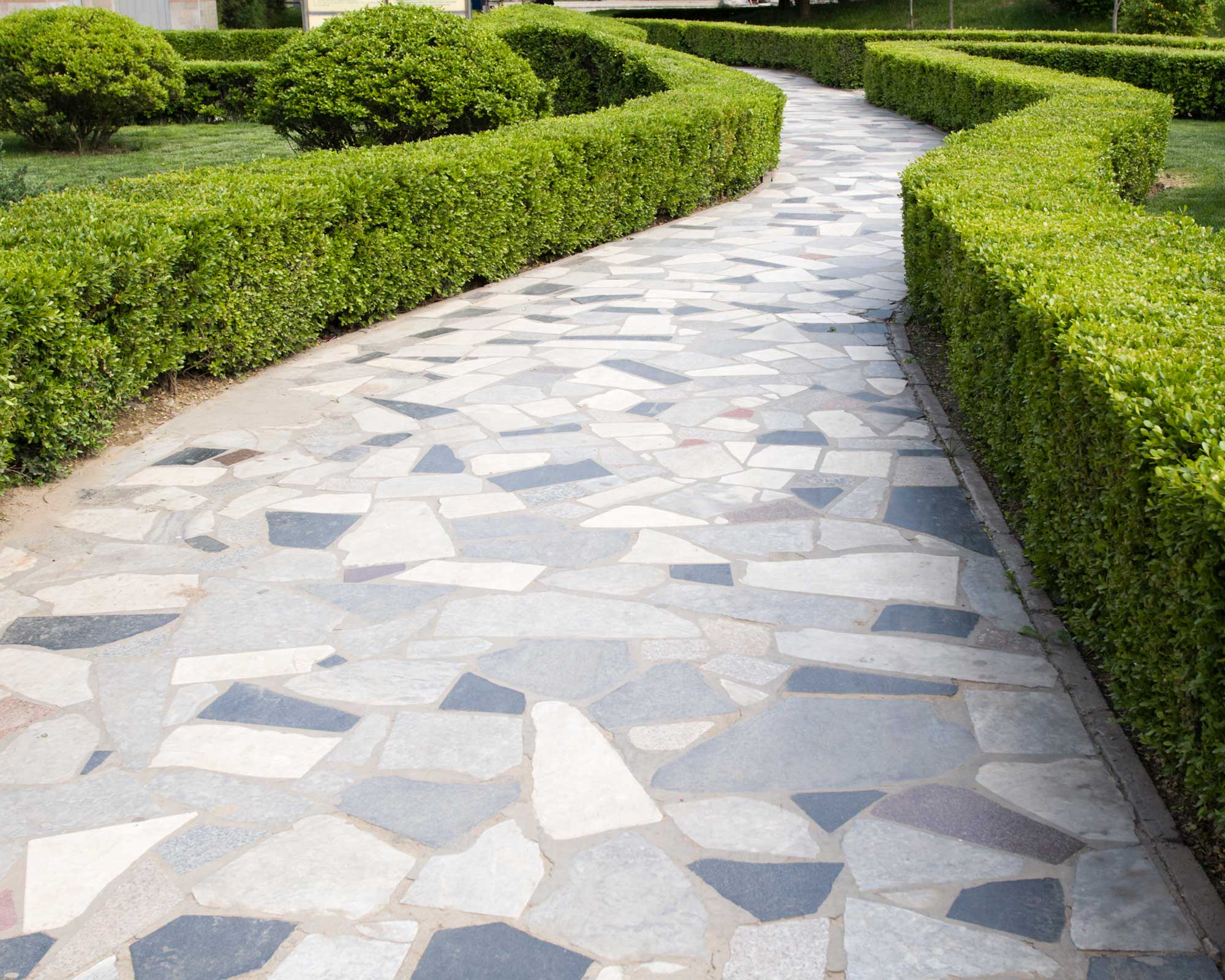
Random course paving can add a sense of playfulness to your plot
A good pick for contemporary and tropical gardens, a random course paving pattern will instantly add a unique touch to your outdoor space.
'Using different sizes, styles, and colors of paving blocks, random course paving sticks to no set design,' explains Infinite Paving. 'Instead, it is a unique assortment of blocks put together in an appealing and individual fashion.'
You could choose all one hue for a sleek and subtle look, or go for a mix. If opting for the latter, choosing complementary tones will keep the overall effect considered rather than chaotic.
You can utilize different grout colors too, or even fill the gaps with low-growing greenery for a more laid-back vibe.
5. Stack Bond

Create a clean and orderly look with this style of paving pattern, as seen in this plot by Living with Lolo and Life Created
This type of paving pattern is one of the simplest, explains Infinite Paving.
There are no staggered joints, unlike the stretcher bond style. Instead, paving blocks are arranged in neatly aligned rows, one on top of the next.
It's incredibly versatile as works with a number of different patio materials, including Indian Sandstone and Indian Limestone. Plus, it can withstand foot traffic well, meaning it's good for garden paths.
For a slightly different look, you can arrange this pattern at a 45-degree angle, adds the team.
6. Planted paving
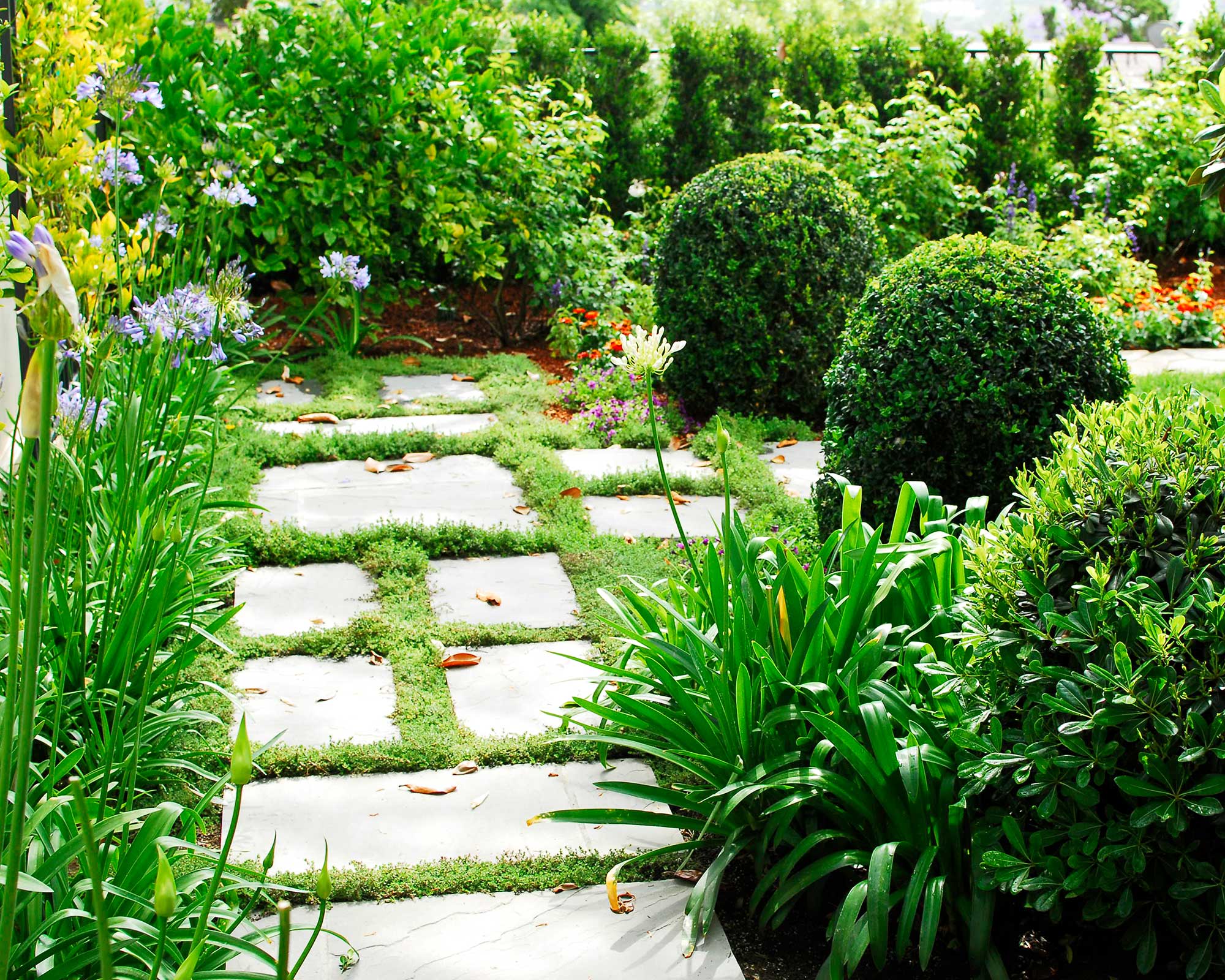
A fresh and green look for laid-back gardens
Ideal for relaxed pathways and wildlife gardens, working planting into your paver patterns leads to a beautiful result.
Space slabs out to create a stepping stone effect – either at random or neat and symmetrical, depending on the look you're going for. In between each paver, you may simply wish to plant hardy turf for a shot of textural green, while for a more floral, romantic scheme, opt for erigeron, or campanula with its bright purple blooms.
Low-growing thyme is also a lovely option, particularly for Mediterranean-inspired gardens, and will release a pleasant scent.
7. Circular
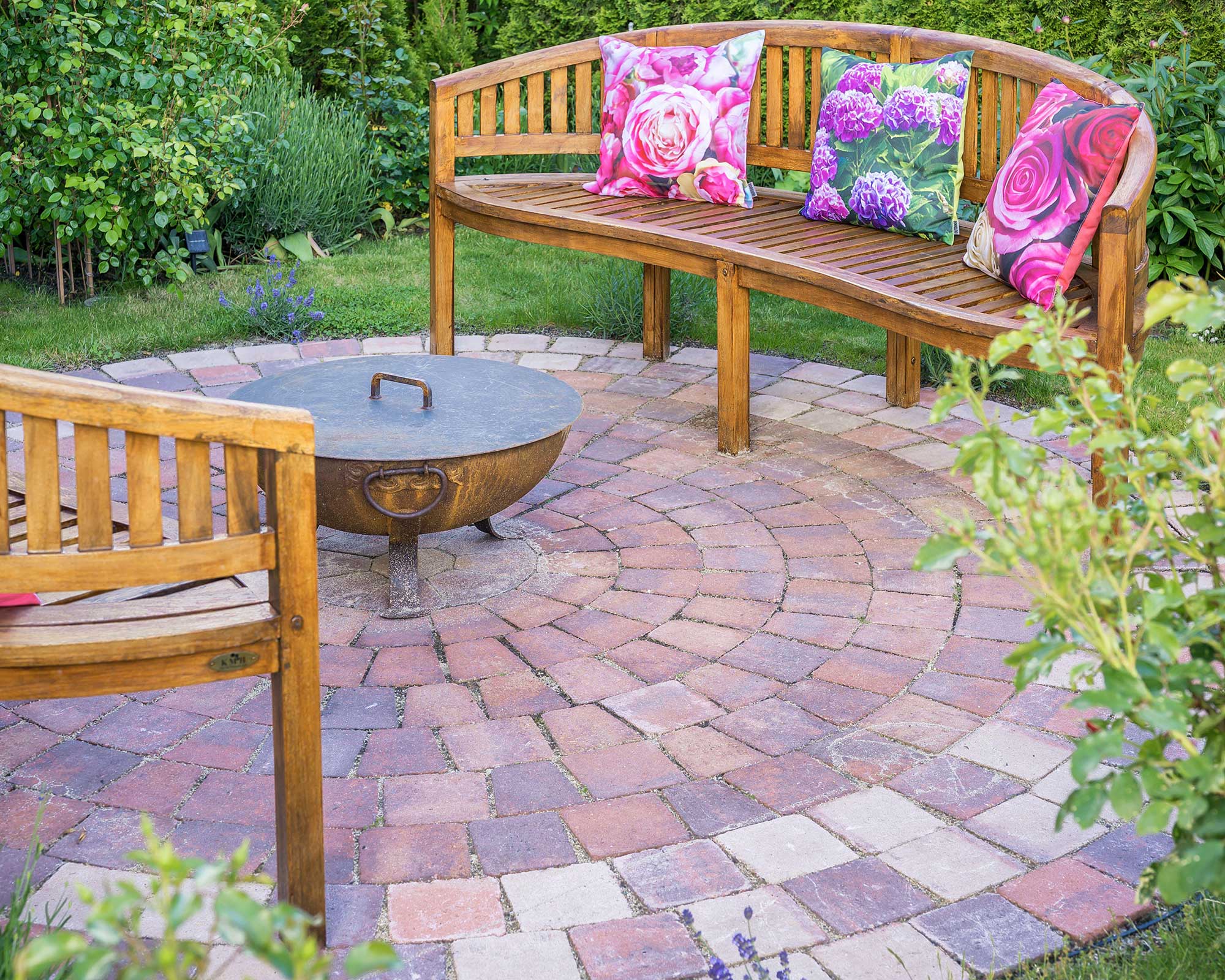
Make a statement with your patio
Building a circular patio is a great way to create a focal point in a garden and it looks beautiful when surrounded by tall, lush plants.
The layout of your pavers can have a big impact on the look of this type of space. The simplest approach is going for a neat series of concentric circles around a centerpoint – this being either a circular slab or, if you're feeling creative, perhaps a pebbled mosaic. There are lots of circular patio paving kits available to buy.
Add a fire pit in the middle for a final flourish and to keep the space feeling cozy throughout the seasons.
8. Interlocking
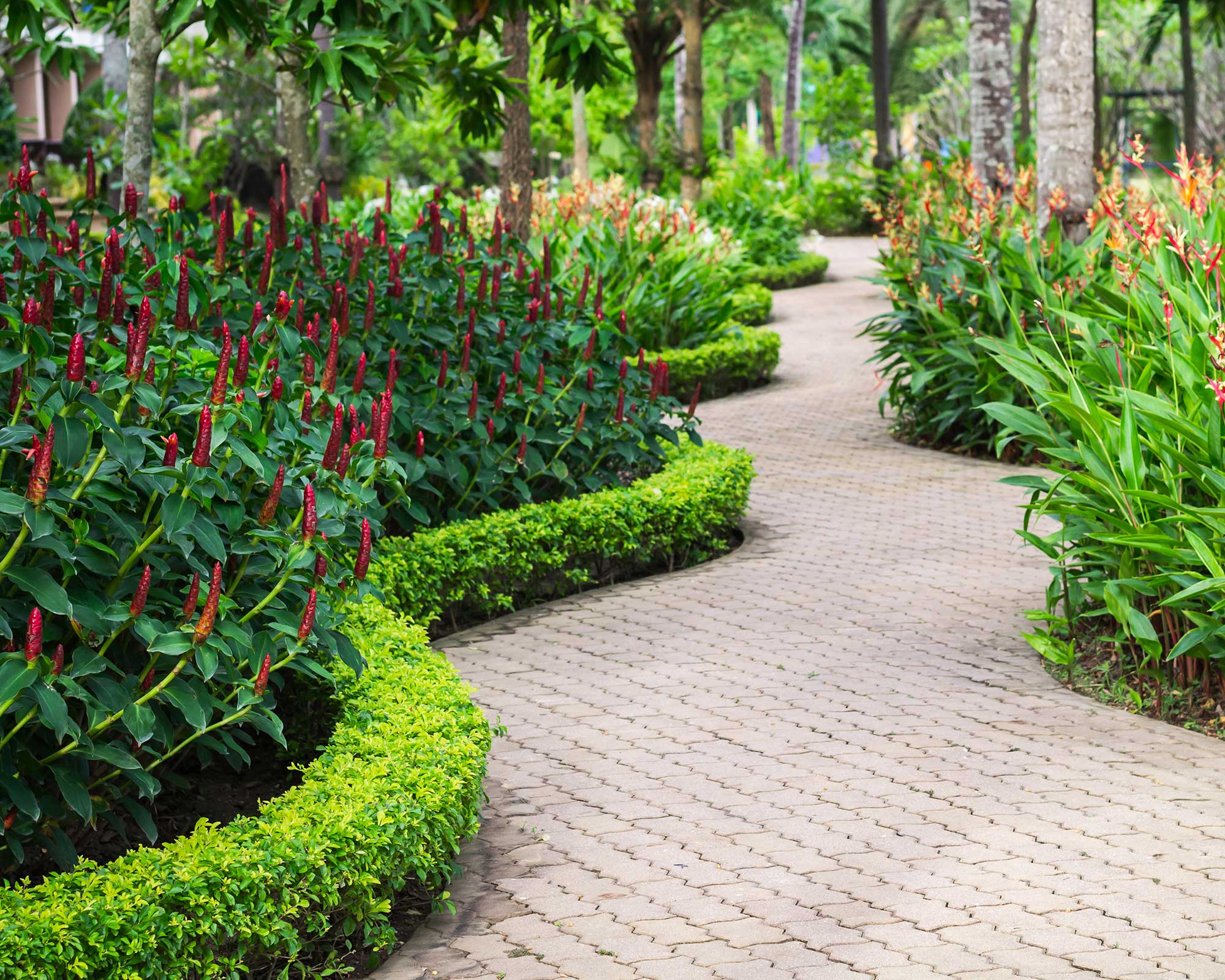
A design like this creates an impressive aesthetic
Some paving slabs are designed to be interlocked. This can lead to impressive, geometric patterns on your patio or path.
The finished result can be incredibly sturdy, especially if you choose a tough material such as concrete. This style of paving is often permeable too, meaning it helps to facilitate garden drainage after rainfall.
Keep them looking tip-top with the best pressure washer on a low setting.
Which is the best paver pattern for your backyard?
'Block paving patterns are pivotal in the architectural design of your home, and more often than not, they are one of the first things visitors will see when visiting your property,' says Rowan Cripps from Infinite Paving.
Some styles are more suited to particular garden aesthetics than others – basketweave, for instance, tends to work well with more whimsical, cottage-garden-style plots. So, take into account the entire look of your outdoor space, including other landscaping features such as garden walls, so that you can choose a paving pattern that helps pull the scheme together.
'However, your choice of paving slab isn't just about great looks; it's also about function,' says Rowan.
The best one for your plot will depend on multiple factors, including your budget, how durable you need it to be, whether it needs to be able to withstand a lot of footfall, and how permeable it is. Our guide on patio materials has lots of helpful advice to help you choose.

The garden was always a big part of Holly's life growing up, as was the surrounding New Forest where she lived. Her appreciation for the great outdoors has only grown since then. She's been an allotment keeper, a professional gardener, and a botanical illustrator – plants are her passion.
